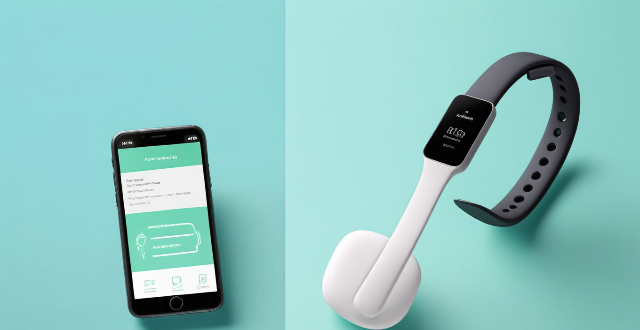The latest trends in smart wearable technology for smartphones include enhanced health and fitness tracking, improved battery life, advanced connectivity options, an expanded app ecosystem, design innovations, health and safety features, voice control and AI integration, and environmental sustainability. These advancements make smartwatches not only fashionable but also highly functional devices that complement our smartphones.

Latest Trends in Smart Wearable Technology for Smartphones
Smart wearable technology has come a long way since the introduction of the first smartwatch. Today, these devices are not only fashionable but also highly functional, offering a wide range of features that complement our smartphones. Here are some of the latest trends in smart wearable technology for smartphones:
1. Enhanced Health and Fitness Tracking
- Heart Rate Monitoring: Many smartwatches now come with built-in heart rate monitors that provide real-time data on your heart's performance.
- Sleep Tracking: Advanced sleep tracking features help users understand their sleep patterns and improve their overall sleep quality.
- Blood Oxygen Monitoring: Some devices can measure blood oxygen saturation levels, which is particularly useful for athletes and people with respiratory issues.
- Stress Tracking: Stress monitoring tools use various sensors to detect changes in your body's response to stress and suggest relaxation exercises.
2. Improved Battery Life
- Longer Battery Life: Manufacturers are focusing on improving battery life, allowing users to go days or even weeks without needing to charge their devices.
- Fast Charging: Some devices now support fast charging, allowing you to quickly top up your battery when needed.
- Energy-Efficient Modes: Many smartwatches have energy-saving modes that extend battery life by reducing functionality while still providing essential features.
3. Advanced Connectivity Options
- Bluetooth 5.0: The latest generation of Bluetooth offers improved range and stability, ensuring a more reliable connection between your smartphone and smartwatch.
- Wi-Fi Calling: Some smartwatches now support Wi-Fi calling, allowing you to make and receive calls directly from your wrist without needing to be connected to your phone.
- LTE Connectivity: Standalone LTE connectivity lets you use your smartwatch as a standalone device, making calls and sending messages without being tethered to your phone.
4. Expanded App Ecosystem
- Third-Party App Support: Smartwatch platforms like Wear OS and watchOS continue to expand their app ecosystems, offering more options for customization and functionality.
- Native App Development: More developers are creating native apps specifically designed for smartwatches, improving performance and user experience.
- Integration with Smart Home Devices: Smartwatches are becoming control centers for smart home devices, allowing you to manage lights, thermostats, and security systems from your wrist.
5. Design Innovations
- Customizable Bands: Manufacturers offer a wide variety of interchangeable bands, allowing users to personalize the look of their devices.
- Durability: Water resistance, scratch-resistant glass, and sturdy construction materials make modern smartwatches suitable for outdoor activities and harsh environments.
- Fashion Collaborations: High-end brands are collaborating with tech companies to create luxury smartwatches that combine style with advanced features.
6. Health and Safety Features
- Fall Detection: Some devices can detect when you've taken a hard fall and will alert emergency services if you're unable to respond.
- ECG Monitoring: Electrocardiogram (ECG) monitoring is becoming more common, providing detailed insights into heart health and potential irregularities.
- Emergency SOS: The ability to quickly send an SOS message with your location is crucial for safety, especially during solo activities like running or hiking.
7. Voice Control and AI Integration
- Voice Assistants: Integrated voice assistants like Siri, Google Assistant, or Bixby enable hands-free control of your smartwatch and connected devices.
- AI Health Coaching: Artificial intelligence algorithms analyze your health data to provide personalized coaching tips and recommendations.
- Contextual Awareness: Smartwatches are becoming more contextually aware, adjusting settings based on your activities or habits automatically.
8. Environmental Sustainability
- Recycled Materials: Some manufacturers are using recycled plastics or other sustainable materials in their smartwatch designs.
- Renewable Energy Charging: Solar-powered charging options are being explored for future generations of smartwatches.
- Longevity and Repairability: Designs are trending towards longer lifespans through better build quality and easier repairability to reduce e-waste.